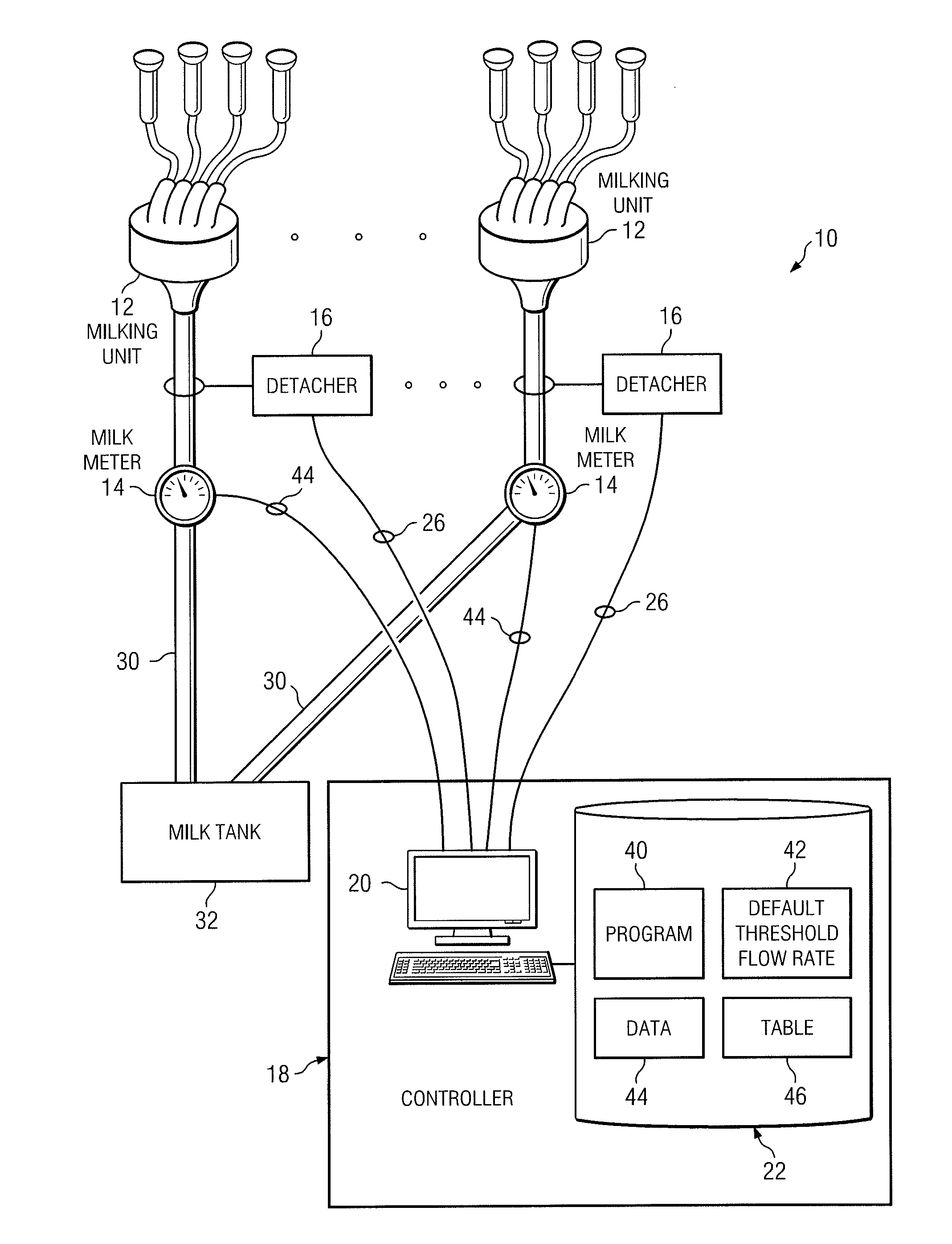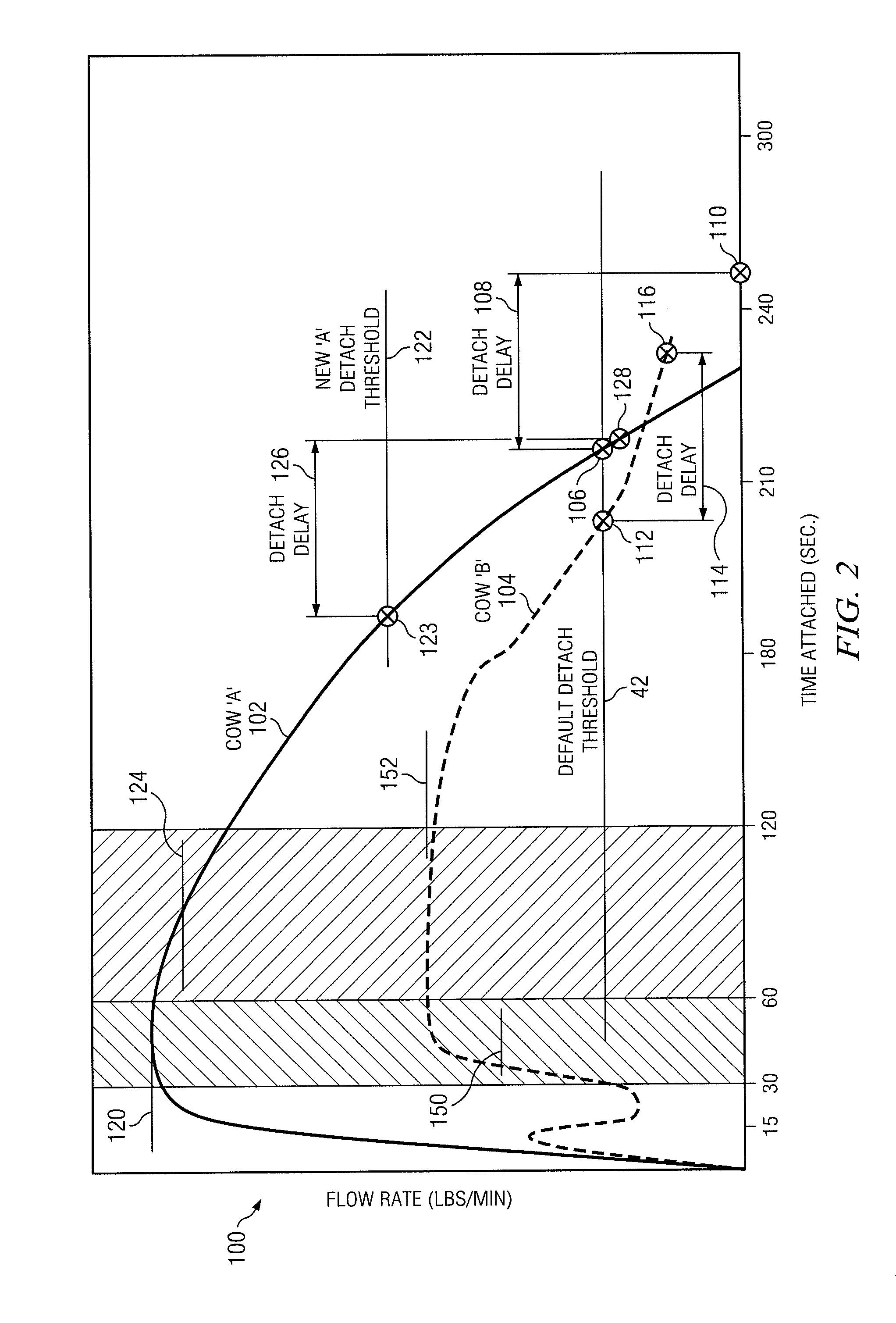System and method for implementing an adaptive milking process
a technology of adaptive milking and process, applied in the field of computerized systems for use in the dairy industry, can solve the problems of reducing the milk production of cows, and achieve the effects of reducing or eliminating the need for user intervention or guesswork, and ensuring milk production
- Summary
- Abstract
- Description
- Claims
- Application Information
AI Technical Summary
Benefits of technology
Problems solved by technology
Method used
Image
Examples
Embodiment Construction
[0014]FIG. 1 illustrates an adaptive milking system 10 that includes milking units 12, milk meters 14, detacher units 16, and a controller 18. In general, milking system 10 is used to milk a cow, a goat, a sheep, or any other livestock suitable for milking. The remainder of this description will be detailed with respect to the milking of a cow. As milk is drawn from the cow using milking units 12, milk meters 14 measure certain information about the milking process, such as the flow rate of milk being produced, and communicates this information to controller 18. As will be described in greater detail below, controller 18 determines an appropriate time to terminate the milking process for a given cow based on the milking performance of that cow in any particular instance. Controller 18 communicates a control signal 26 to a detacher unit 16, as appropriate, and detacher unit 16 removes the milking unit 12 from the teats of the cow in response to this control signal 26. In this way, co...
PUM
 Login to View More
Login to View More Abstract
Description
Claims
Application Information
 Login to View More
Login to View More - R&D
- Intellectual Property
- Life Sciences
- Materials
- Tech Scout
- Unparalleled Data Quality
- Higher Quality Content
- 60% Fewer Hallucinations
Browse by: Latest US Patents, China's latest patents, Technical Efficacy Thesaurus, Application Domain, Technology Topic, Popular Technical Reports.
© 2025 PatSnap. All rights reserved.Legal|Privacy policy|Modern Slavery Act Transparency Statement|Sitemap|About US| Contact US: help@patsnap.com



